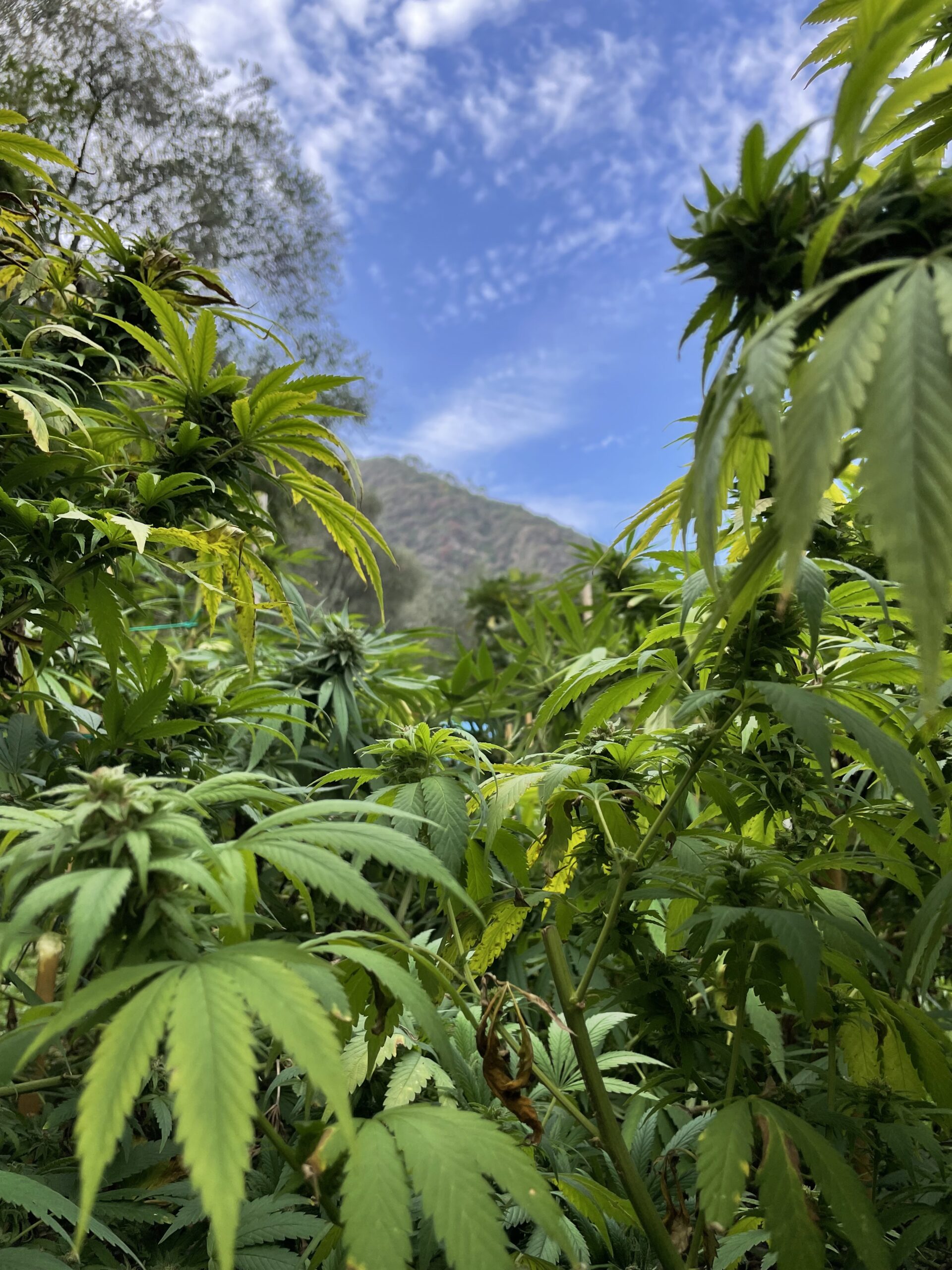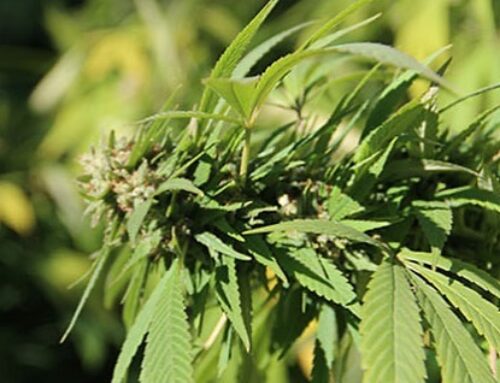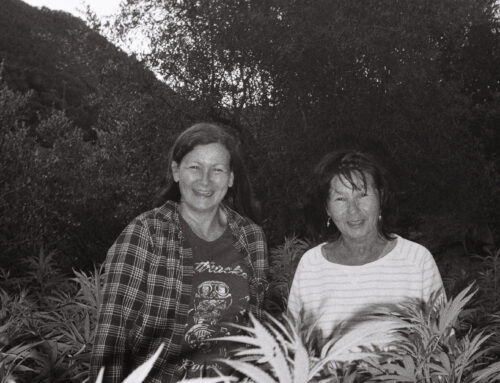Montalto, Liguria,Italia
Indoor versus outdoor, growing hemp offers a few possibilities
Montalto, Liguria, Italy.
Indoor versus outdoor, growing hemp offers a few possibilities
Hemp is one of the most versatile plants there is. It has been used for various purposes for thousands of years and has experienced a real boom in recent years. It is a very hardy plant that can be grown both indoors and outdoors and will bring great benefits. But what should be considered with the two cultivation options and what are the advantages?
What is hemp?
Hemp is the German name for cannabis. Cannabis is the Latin term and is often associated with the THC-containing components of the plant. In contrast, the term hemp is often used for the crop. The hemp plant belongs to the hemp family, which also includes hops, for example. It produces Phyto cannabinoids such as CBD and the well-known THC.
By consuming these cannabinoids, they act on the endocannabinoid system of the human (and animal) body, triggering various processes. The different Cannabinoides have different, but mostly positive effects.
What is hemp used for?
Hemp was one of the earliest and most important crops that the ancient peoples of Asia began to cultivate. It ensured the survival of many cultures because every part of the plant is useful and therefore valuable.The stalks can be processed into fibers, which are used to make very robust clothing and tear-resistant paper, among other things.The seeds of hemp and the cooking oil made from them are among the superfoods because they contain a lot of healthy and immune-boosting substances.The pressed oil resembles linseed oil and is used in the manufacture of varnish and paint, as fuel and as lubricating oil.Hemp is often used in construction, as insulating material, but also as hemp lime or in the form of bricks.Even plastic can be made from hemp, which is of great benefit to our environment as hemp is biodegradable.Depending on the ingredients, the leaves, flowers and roots are consumed as an intoxicating agent, processed into medicine and/or cosmetics.
The cannabinoid CBD is very popular. It has no intoxicating effect but many positive properties. We at Fiore d’Oro have long been convinced of this valuable plant and the resulting cannabinoid CBD. That’s why we grow our CBD flowers with great care and still with real manual work in the coastal region of Riviera dei Fiori.
Now read what indoor and outdoor cultivation means, what the differences are and our conclusion.
Indoor versus outdoor
Indoor hemp cultivation
In principle, indoor cultivation requires a large purchase of various equipment. Although this can be reused for any further cultivation, it is initially a high cost. Everything that is available in nature anyway must be offered and simulated by the equipment in the indoor area of the plant. light, water, earth, and wind. Depending on the size of the grow and the number of plants, this can get very expensive. Running costs are also high. The plants need regular watering and the lights and ventilation system constantly consume electricity.
Space problems can quickly arise indoors. If you as a private person want to grow 2-3 plants, you can set up a place for it in your apartment, but especially in the professional field, for example when growing medicinal cannabis, entire warehouses are equipped for this.
Unfortunately, the complete indoor cultivation consumes a lot of resources and is therefore anything but environmentally friendly or climate friendly.
The plants that are grown indoors require a lot more care and attention as the grower must take care of them completely. Care mistakes can easily happen that can destroy the entire cultivation. But it is precisely through the necessary attention that small changes in the plants are quickly noticed, and one can react quickly and give the plants good support.
The big advantage of indoor growing is that you can start growing at any time and are completely independent of the climate and time of year outside. When a grow is finished, you can immediately start the next one.
In the indoor area you also have an influence on the different life phases of the hemp plants because you regulate the vegetative or flowering phase through the light setting. Thus, the plants can be strengthened well in the growth phase and the e.g., CBD flowers can develop magnificently in the flowering phase. Harvesting is much less complex since no fields have to be driven on and the stalks of the plants are not that high.
The big advantage of indoor growing is clearly that you can control and change the environmental conditions in a targeted manner. This means that you always can influence the existing life phase of the hemp plants, which in turn leads to a more controlled and more even cannabinoid content in the flowers.
The outdoor hemp cultivation
Outdoor means growing the plants outside, in the great outdoors. Of course, this has the advantage that the cultivation is much cheaper than, for example, indoor hemp cultivation, since far fewer purchases are necessary. The running costs are limited to watering, if necessary, at all, and the possible addition of fertilizers or fungicides.
In addition, nature is the “home” of the hemp plants and there they receive everything they need for healthy growth: sun, rain, soil, and air. Of course, these four elements should be in a good balance so that the hemp plants can grow well and deliver a high-yielding harvest. For example, if it is a very rainy year, then it is quite possible that the CBD flowers develop very poorly because they do not get enough sun, or the harvest fails completely.
In principle, hemp plants can grow in all climate zones. But especially on the beautiful Riviera di Fiori in Italy, the climate is predestined for outdoor hemp cultivation.
A big advantage in the outdoor area is above all the space. In a large field you can grow the plants in such a way that they have enough space, and the air can circulate well between the plants. This prevents the risk of mold and ensures good flower growth. But the plants can also grow upwards, which is also necessary for different varieties. Some hemp strains reach a height of 7-9m.
As already mentioned, the hemp plant is a very robust plant that has developed its own very successful defense mechanisms against pests, insects, and predators. Namely, their extraordinarily distinctive smell. Unfortunately, she is exposed to other dangers in nature. That is why the plants in the outdoor area must also be checked regularly and, if necessary, treated with natural organic fungicides or organic fertilizers.
The fact that you cannot keep an eye on the individual plants so well can lead to a rapid increase in pests or diseases, which unfortunately is often only noticed too late.
Outdoor hemp cultivation is much more environmentally friendly than indoor cultivation since no electricity is required and much less energy is used. In addition, the hemp plants are wonderful CO2 filter machines and loosen up the soil with their long roots.
One downside to growing outdoors is that you must be mindful of the seasons. You cannot start growing in winter as it would simply be too cold for the small plants. In addition, there is no possibility of influencing the vegetative and flowering phases, so here too you are dependent on the season and the whims of nature.
The risk of theft is much higher outdoors than if you grow your plants indoors, for example.
Conclusion on indoor versus outdoor
Both cultivation options offer their advantages and disadvantages and the possibility of obtaining a high-quality and substantial harvest result. Yes, for us it was very clear that we wanted to grow the hemp plants to produce the CBD flowers outdoors. This is the natural habitat of the plant and the climate and environment in Riviera dei Fiori provides the hemp plants with everything they need to grow healthy and strong. We’ll do the rest. Although the harvest is very exhausting due to the real manual work, it is worth it to us to hold our high-quality and naturally manufactured product in our hands in the end, which protects the climate and has a positive influence on the environment.
Research:
Robert Connell Clarke (2004): Hanf- Botanik, Anbau Vermehrung und Züchtung, 5. Auflage, A T Verlag; Lizermann Lark- Lajon (2016): Der Cannabis- Anbau, der einfache Weg zum eigenen Homegrow, 7. Auflage, Nachtschatten Verlag . https://www.nachtschatten.ch/products/product_0555.html; cannabibliothek.de
Mila Grün






